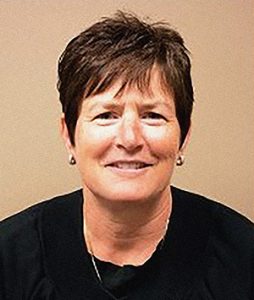DR. DEANN FITZGERALD STARTED practicing optometry in Cedar Rapids, IA, in 1984. In 2006, she founded the non-profit Spanda, Inc., which combines optometry with other healthcare specialties and took her as far afield as Kenya. Soon, she decided to expand Spanda’s activities to her own community. Spanda opened Cedar Rapids Vision In Motion (CRVIM), a vision wellness and rehab clinic, in 2007. What started as a 1,600-sq. ft location with an occupational therapist and a single employee now occupies 6,000 sq. ft and employs two athletic trainers, seven therapists and two ancillary staff.
THE IDEA
A Door Opens
Vision therapy was on Fitzgerald’s radar screen from her earliest days in optometry, but it took some time for her to embrace it. “I originally went to school with the thought of providing therapy but Cedar Rapids was very medically oriented, with the University of Iowa just 20 minutes away. Which made it very difficult at first to want to do therapy.” But by the 1990s — the “decade of the brain” — she sensed a door opening.
THE EXECUTION
Bridging the Gap

Dr. DeAnn Fitzgerald
CRVIM deals with a larger variety of diagnoses and issues than we can list. The services Fitzgerald’s team have developed bridge “the gap between assessment and treatment” for patients of all ages who experience visual processing dysfunction. In other words, “It’s a brain thing,” as the practice’s mantra states. Since 2010, CRVIM has also been teaching, offering instruction to OTs, PTs, ATs and others, passing on Fitzgerald’s “Train your brain to see again” gospel.
Patients find CRVIM in a variety of ways. “We have the general practice so sometimes people come in for routine care and find out that we do other services to help with various problems.” Of course, there’s word of mouth, as well as the training conferences to which the CRVIM team are now often invited as experts. “I have patients come from a nine-state area for our services. With the training conferences, we try to collaborate with other OTs and PTs.” Among the many hats Fitzgerald wears, she is vice president of the Neuro-Optometric Rehabilitation Association (NORA), an inter-disciplinary industry group whose mission is to see that patients with physical or cognitive disabilities as a result of an acquired brain injury get full ocular health evaluation and optimum visual rehab services.
Fitzgerald doesn’t have the luxury of patterning CRVIM after anything in the industry, “because it doesn’t exist. But I look at what’s possibly working and couple it with things that work — multi layered therapy or integrated therapy for quicker recovery — so we combine vision vestibular and auditory and proprioception all together for a more intense and passive therapy that works well.”
Advertisement
THE REWARDS
‘The Last Resort’
Fitzgerald finds working with neurologically challenged patients — “giving them back their life,” as she puts it — hugely rewarding, but along with the highs there are tough moments. “These patients have a lot of depression and emotional issues that you have to cut through to get them better.”
Fitzgerald established baseline testing for 1,400 metro youth football players over a period of three years. At first many parents didn’t see the need, but by year three every one of the players came in to get tested. She eventually donated seven laptops so these schools could do their own testing. The Pop Warner youth football league last year rated these schools’ testing system as the best it had seen.
It’s an anecdote that illustrates the complexity, and the importance, of CRVIM’s activities. “We do get very complex patients,” says Fitzgerald, “because sometimes we are the last resort.”
Do It Yourself: Develop a Niche Rehab Practice
- BONE UP. Be prepared to learn on the fly. Says Fitzgerald: “Optometric education provides the avenues to do rehab, but I have logged countless hours in classes and reading … on … concussion and brain injury.”
- LOOK AROUND. Fitzgerald advises finding someone who is doing what you want to do—and learning. “It’s the quickest way to get where you want to go…We have a lot of doctors visit our clinic.”
- BE USEFUL. Get into the community, says Fitzgerald, and “instead of telling people what you do — ask them what they need. Then help make it happen — often that is the ‘in’ to getting partnered with them.”
- HIRE CAREFULLY. Fitzgerald says one of her biggest challenges has been finding staff that are competent but also compassionate.
- PREPARE YOURSELF. Rehab can be taxing for both patient and therapist. Fitzgerald says of her patients: “They have a brain injury. We have to gently get them out of their own way so they can recover.”